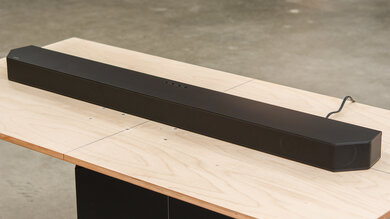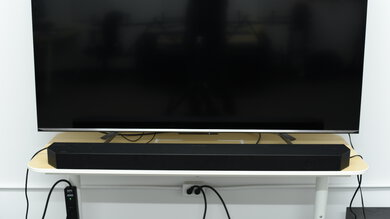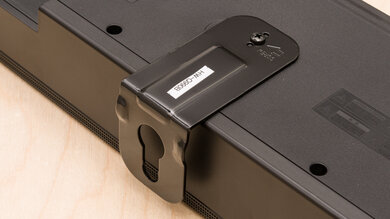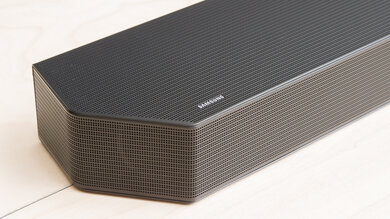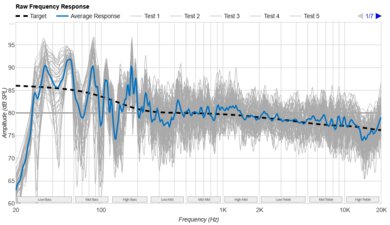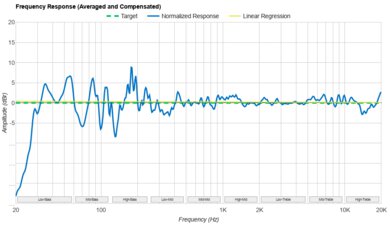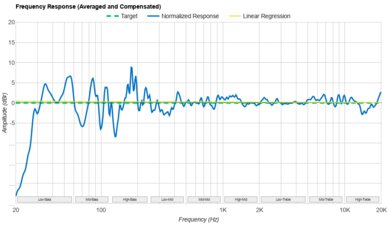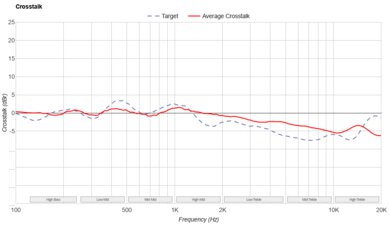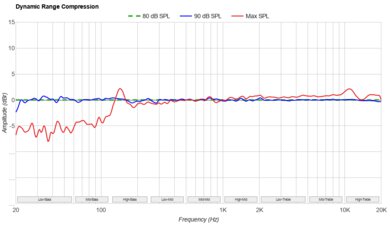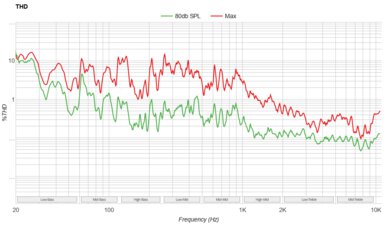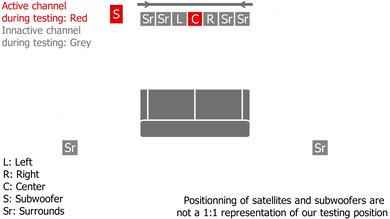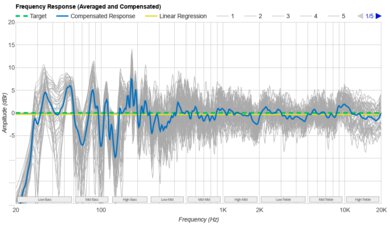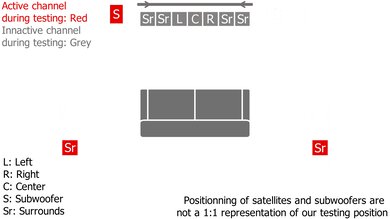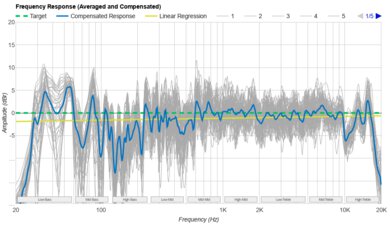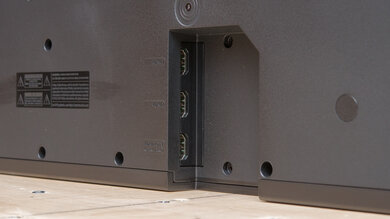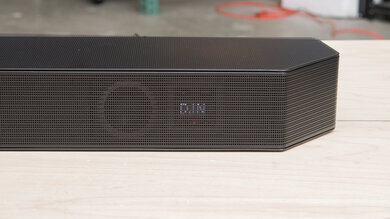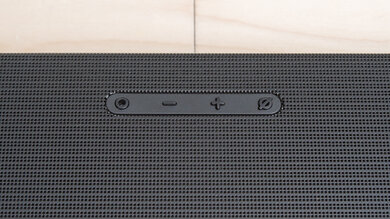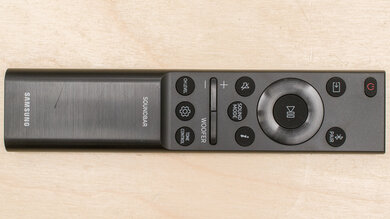The Bose Smart Soundbar 300 is a smaller and more affordable alternative to some of the more premium options in Bose's lineup. It retains the same sleek, stylish design as other models like the Bose Smart Soundbar 600 and the Bose Smart Soundbar 900, with built-in voice assistant support so you can control it from the comfort of your couch. You can even upgrade it with a separate sub and satellites from the manufacturer. However, this 3.0 setup is best suited for stereo content, and it doesn't offer Dolby Atmos support to make the most of more immersive formats on streaming platforms.
Our Verdict
The Bose Smart Soundbar 300 is a fair choice for mixed usage. It's a simple 3.0 bar that's designed for listening to stereo content, which includes most music and TV shows. Dialogue is clear in the mix, and there's a little extra punch and sparkle to bring voices and other instruments to life. You can adjust its bass and treble, too, though you don't have access to more premium tools like room correction. It's not the best choice for multi-channel content like Dolby Digital, since it downmixes this content into stereo.
- Outstanding wireless connectivity options.
- Bass adjustment feature available.
- Gets loud.
- No EQ or room correction.
- Lacks low bass.
- Doesn't support Atmos.
The Bose Smart Soundbar 300 is satisfactory for dialogue-focused TV shows and podcasts. Thanks to its discrete center channel, its vocal reproduction is really great, and dialogue is clearly and accurately reproduced. You can even use its dialogue enhancement tool to make voices more clear and crisp. However, there's no auto-volume mode, so you can't balance the volume level between commercials and shows like with other bars.
- Dialogue enhancement feature available.
- Outstanding wireless connectivity options.
- No EQ or room correction.
- No auto-volume feature.
The Bose Smart Soundbar 300 is satisfactory for music. Out-of-the-box, it has a slightly V-shaped sound that's ideal for listening to genres with lots of highs and lows, like rock, pop, EDM, and hip-hop. Voices and lead instruments are clear in the mix, but there's a little extra punch in the bass range, as well as some sparkle in the treble. However, as a standalone bar, it cannot reproduce a very deep low-bass.
- Bass adjustment feature available.
- Gets loud.
- No EQ or room correction.
- Lacks low bass.
The Bose Smart Soundbar 300 is acceptable for movies. For a standalone bar, it does a good job reproducing dialogue, so you can follow along with the action in your top films. That said, 5.1 surround sound formats like Dolby Digital are downmixed into stereo, which doesn't provide the most immersive sound. You can't watch Dolby Atmos content either, which is a shame if you're looking for a more immersive audio experience from your streaming platforms.
- Bass adjustment feature available.
- Gets loud.
- Lacks low bass.
- Doesn't support Atmos.
Changelog
- Updated Dec 04, 2023: Updated review text for clarity. No changes in test results.
- Updated Jun 07, 2023: Converted to Test Bench 1.2. Updated the results for audio format support via ARC/eARC, HDMI In, and Optical. Added Video Passthrough to TV results as well.
- Updated Mar 13, 2023: Added cable lengths to In The Box.
- Updated Mar 10, 2023: Converted to Test Bench 1.1. With this update, we've added a Mounting test and added information aboutSubwoofer Output, Spotify Connect, and Microphone Mute.
Check Price
Differences Between Sizes And Variants
The Bose Soundbar 300 comes in one color variant: Black. You can see the label for the model we tested here.
If you come across another version of this soundbar that's different from ours, please let us know in the forums, and we'll update our review.
Popular Soundbar Comparisons
The Bose Smart Soundbar 300 is a 3.0 setup from this manufacturer's 2020 lineup. Compared to the Bose TV Speaker, it adds an additional channel to improve vocal reproduction in the mix. However, it's still quite a simple soundbar that lacks the more premium features of Dolby Atmos soundbars from the manufacturer, like the Bose Smart Soundbar 900 or the Bose Smart Ultra Soundbar. If you mostly listen to stereo content, you may find it's a better value overall.
If you're looking for more soundbars, check out our recommendations for the best Bose soundbars, the best small soundbars, and the best soundbars for dialogue.
The Sonos Beam (Gen 2) is better than the Bose Smart Soundbar 300. The Sonos is a better-built 5.0 setup. It has better soundstage and surround performances. Unlike the Bose, it supports Dolby Atmos content. Also, there are more sound enhancement features, like room correction. That said, only the 3.0 Bose supports Bluetooth connectivity.
The Bose Smart Soundbar 300 is a better soundbar than the Bose Solo 5. The Smart Soundbar 300 is better-built, and it comes with an ARC port and more wireless playback options. It has better soundstage and surround performances, and it gets louder. Also, it has built-in voice assistant support. That said, some listeners may prefer the Solo 5's more compact design.
The Sonos Arc is a better soundbar than the Bose Smart Soundbar 300. The Sonos is a 5.0.2 setup with a more extended bass and sound enhancement features. It also has better surround and soundstage performances and supports Dolby Atmos content. It can even be upgraded to the Sonos Arc with Sub + One SL Speakers. However, the 3.0 Bose offers more wireless playback support.
The Bose Smart Soundbar 300 is better for mixed use than the Bose TV Speaker. The 300 has a better center and surround performance. It also offers treble adjustment and more wireless playback options like Apple AirPlay 2. It also connects to the Bose Music app that gives you a bit more functionality.
Test Results


